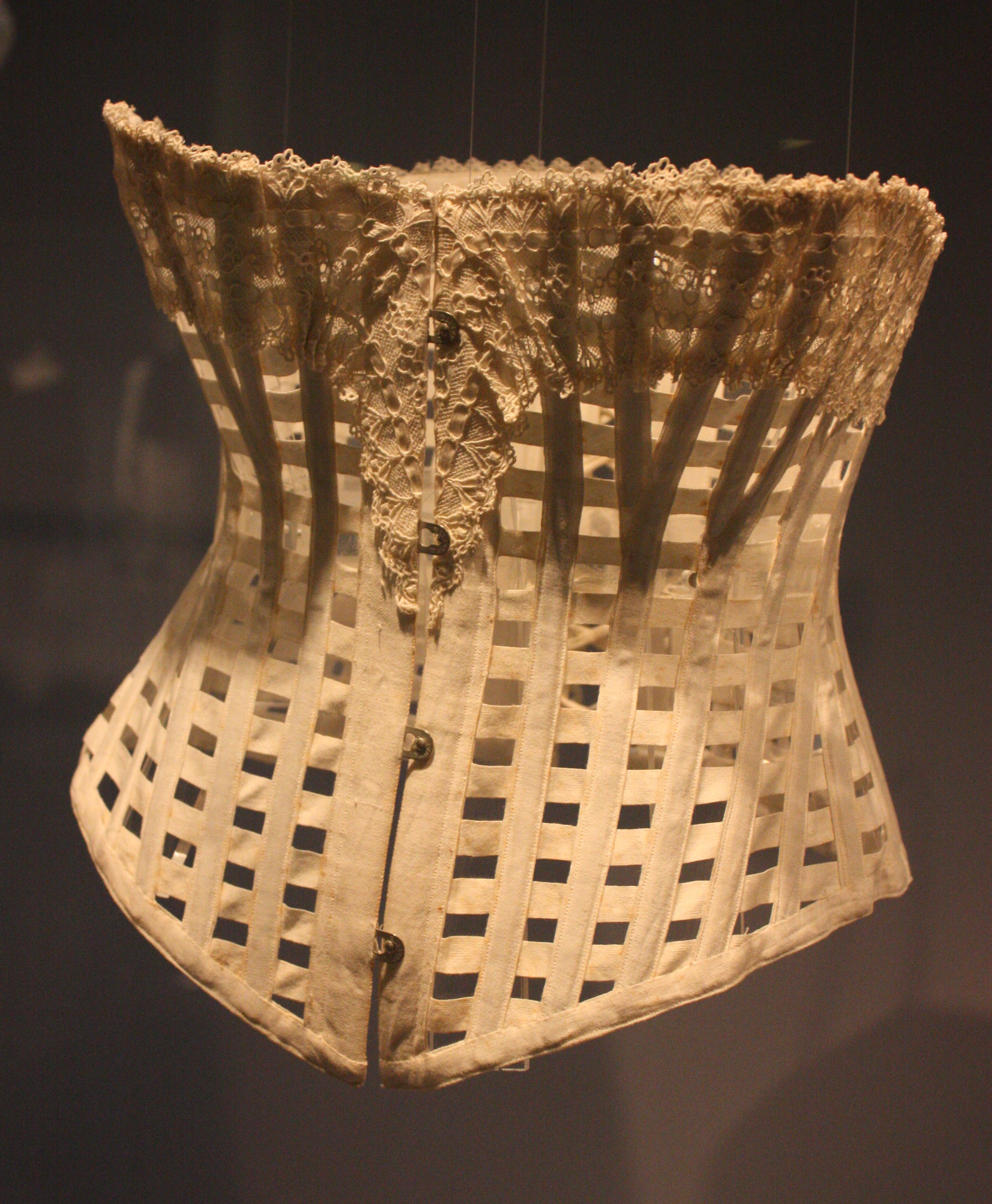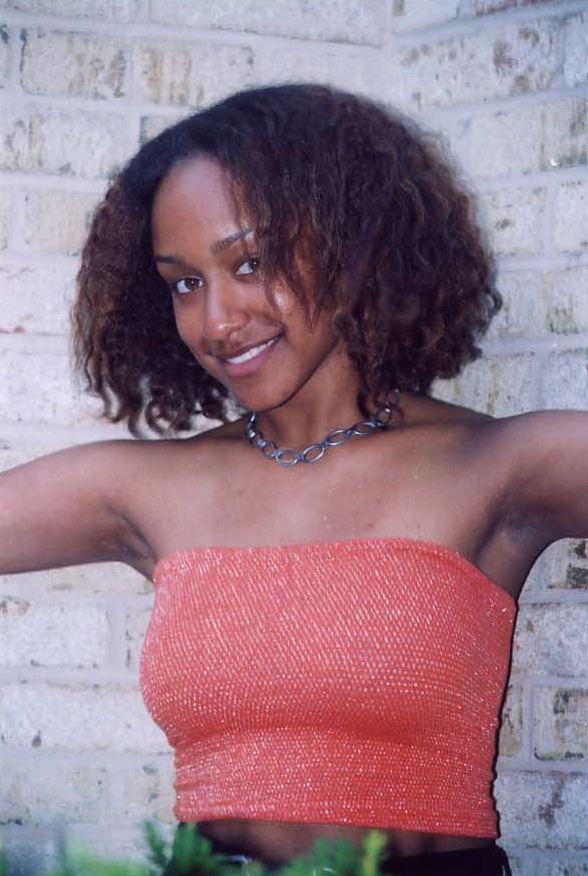|
Ease (sewing)
In sewing and patternmaking, ease is the amount of room a garment allows the wearer beyond the measurements of their body. There are two types of ease, wearing ease and design ease. Wearing ease is the amount of room added so that one can engage in daily activities, such as sitting or moving. According to one source, wearing ease is 2 1/2" at the bust, 1" as the waist, and 3" at the hip. A second source notes that ready to wear ease is 2" at the bust, 1" at the waist, and 2" through the hips. Design, or fashion, ease is connected with a designer creating a particular look, and extends beyond wearing ease. The amount of ease allowance leads to specific categories: close-fitting, fitted, semi-fitted, loose-fitting, and very loose-fitting. Clothing worn during the day tends to need mrore ease than evening garments, because of the range of activities that might take place. For evening garments, the activity determines how much ease will be needed. Ease is most important for woven ... [...More Info...] [...Related Items...] OR: [Wikipedia] [Google] [Baidu] |
Sewing
Sewing is the craft of fastening pieces of textiles together using a sewing needle and thread. Sewing is one of the oldest of the textile arts, arising in the Paleolithic era. Before the invention of spinning yarn or weaving fabric, archaeologists believe Stone Age people across Europe and Asia sewed fur and leather clothing using bone, antler or ivory sewing-needles and "thread" made of various animal body parts including sinew, catgut, and veins. For thousands of years, all sewing was done by hand. The invention of the sewing machine in the 19th century and the rise of computerization in the 20th century led to mass production and export of sewn objects, but hand sewing is still practiced around the world. Fine hand sewing is a characteristic of high-quality tailoring, haute couture fashion, and custom dressmaking, and is pursued by both textile artists and hobbyists as a means of creative expression. The first known use of the word "sewing" was in the 14th century. ... [...More Info...] [...Related Items...] OR: [Wikipedia] [Google] [Baidu] |
Grain (textile)
For woven textiles, grain refers to the orientation of the weft and warp threads. The three named grains are straight grain, cross grain, and the bias grain. In sewing, a pattern piece can be cut from fabric in any orientation, and the chosen grain or orientation will affect the way the fabric hangs and stretches and thus the fit of a garment. Generally speaking a piece is said to be cut on a particular grain when the longest part of the pattern or the main seams of the finished piece are aligned with that grain. Non-woven materials such as felt, interfacing or leather do not have a grain. Straight grain The straight grain is oriented parallel with the warp threads and the selvedge. The straight grain typically has less stretch than the cross grain since the warp threads will be pulled tighter than the weft during weaving. Most garments are cut with the straight grain oriented top to bottom.Howard, Pamela. "For woven fabrics, it's important to go with the grain". Threads (Taunton ... [...More Info...] [...Related Items...] OR: [Wikipedia] [Google] [Baidu] |
Bone (corsetry)
In corsetry, a bone is one of the rigid parts of a corset that forms its frame and gives it rigidity. The purpose of the ''boning'' in a corset varies slightly from era to era. Generally, the cinching/shaping properties of corsetry puts strain onto the fabric from which the corset is made. The boning supports the desired shape and prevents wrinkling of the corset fabric. Bones, and the substances used for the purpose, are generically called "boning"; however, the name likely arises from the use of whalebone in early corsets. Modern corset boning comes in two different qualities: the more durable metal and less durable plastic. Since the turn of the 20th century, steel boning was the standard for a high quality corset, coming in two different types: flat spring steel and spiral steel. While spring steel is most preferred for being thin and flexible, it only has the ability to bend in a single direction. Spiral steel is able to bend both horizontally and vertically, its only drawbac ... [...More Info...] [...Related Items...] OR: [Wikipedia] [Google] [Baidu] |
Cut (clothing)
Cut in clothing, sewing and tailoring, is the style or shape of a garment as opposed to its fabric or trimmings. The ''cut'' of a coat refers to the way the garment hangs on the body based on the shape of the fabric pieces used to construct it, the position of the fabric's grain line, and so on. See also * Ease (sewing) *Pattern (sewing) In sewing and fashion design, a pattern is the stencil, template from which the parts of a garment are traced onto woven fabric, woven or knitted fabrics before being cut out and assembled. Patterns are usually made of paper, and are sometimes ... * Clothing terminology References * Picken, Mary Brooks: ''The Fashion Dictionary'', Funk and Wagnalls, 1957. (1973 edition ) Sewing {{clothing-stub ... [...More Info...] [...Related Items...] OR: [Wikipedia] [Google] [Baidu] |
Slim-fit Pants
Slim-fit pants or skinny jeans (when made of denim) are tight trousers that have a snug fit through the legs and end in a small leg opening that can be anywhere from 9" to 20" in circumference, depending on size. Other names for this style include drainpipes, stovepipes, tight pants, cigarette pants, pencil pants, skinny pants, gas pipes, skinnies, and tight jeans. ''Skinny pants'' taper completely at the bottom of the leg, whereas ''drainpipes'' are skinny but then the lower leg is straight instead of tapering and so they are often slightly baggier at the bottom of the leg than skinny jeans. In some very skinny styles, zippers are needed at the bottom of the leg to facilitate pulling them over the feet because the leg opening is so small. Stretch denim, with anywhere from 2% to 4% spandex, may be used to allow jeans to have a "super-slim fit". Skinny jeans come in a variety of colors and styles. History Origins Before the 18th century, European men wore breeches and hose. I ... [...More Info...] [...Related Items...] OR: [Wikipedia] [Google] [Baidu] |
Bell-bottoms
Bell-bottoms (or flares) are a style of trousers that become wider from the knees downward, forming a bell-like shape of the trouser leg. History Naval origins In the early 19th century, when standardised uniforms for British ratings in the Royal Navy or enlisted men in the U.S. Navy did not as yet exist, some sailors adopted a style of wide trousers ending in bell-shaped cuffs. In 1813, one of the first recorded descriptions of sailors' uniforms, written by Commodore Stephen Decatur, noted that the men on the frigates ''United States'' and ''Macedonia'' were wearing "glazed canvas hats with stiff brims, decked with streamers of ribbon, blue jackets buttoned loosely over waistcoats, and blue trousers with bell bottoms." The Royal Navy had often been a leader in nautical fashion, but bell-bottoms did not become part of the standard uniform until the mid-19th century. These bell-bottoms were often just very wide-legged trousers, rather than shaped trousers that flared below ... [...More Info...] [...Related Items...] OR: [Wikipedia] [Google] [Baidu] |
Hip-huggers
Hip-huggers are pants worn by both men and women, generally made of denim and fitted tightly around the hips and thighs, while usually having flared or bell-bottom lower legs. Hip-huggers were first designed by Irene Kasmer in 1957 in Los Angeles, California. They were worn by the mods in the mid 1960s and into the early 1970s. The late 1970s saw the return of hip-huggers in the disco scene. They were also worn, but to a lesser extent, in the early 1980s, but made a reappearance in the 2000s. The hip-huggers of the 2000s were distinguished by the tightness of the knee, as well as the lower rise of the jeans, typically well below the belly button. This is the product of the boot cut Bell-bottoms (or flares) are a style of trousers that become wider from the knees downward, forming a bell-like shape of the trouser leg. History Naval origins In the early 19th century, when standardised uniforms for British ratings in the ... style. The 2000 styles saw pants that were not ... [...More Info...] [...Related Items...] OR: [Wikipedia] [Google] [Baidu] |
Phat Pants
Phat pants, phatties, or phats are a style of pants that are fitted at the waist, but get increasingly wide down the legs, covering the feet entirely due to their width. Phat pants can be made out of a variety of materials, however denim, faux fur, and cotton fabric tend to be the most common. High-end customized phats tend to include UV reflective tape decoration to add a glowing effect. Phat pants are notable for being a visual identifier of those within the rave community. Popular makers of phat pants include Kikwear, UFO, Q-ambient, and JNCO. Phat pants originated in 1990. A Melbourne raver who could not wear slim pants due to thick legs started making them to fit her frame. Rose to popularity in early 1990s with Tina Borg, Renegade and continued to grow into candy phat pantz in 1995 within the kandi kid community of ravers. See also *Bell-bottoms Bell-bottoms (or flares) are a style of trousers that become wider from the knees downward, forming a bell-like s ... [...More Info...] [...Related Items...] OR: [Wikipedia] [Google] [Baidu] |
Tube Top
A tube top is a shoulderless, sleeveless garment primarily worn by women that wraps around the upper torso. It is generally tight over the breasts, and usually uses elastic bands at its top and bottom to prevent it from falling. The tube top's precursor was a beachwear or informal summer garment worn by young girls in the 1950s that became more widely popular in the 1970s and returned to popularity in the 1990s and 2000s. In 2012, Iranian-Israeli fashion designer Elie Tahari claimed that he helped popularize the tube top after his arrival in New York in 1971. The original tube tops, as spotted by Tahari in a New York factory run by Murray Kleid, were elasticated gauze tubes reportedly produced through a factory manufacturing error. Murray ran with this product for years, and eventually Tahari bought tubes from Kleid, later setting up his own factory to mass produce tube tops to meet widespread demand. Dress code controversies In the 2010s, tube tops were banned by some schools ( ... [...More Info...] [...Related Items...] OR: [Wikipedia] [Google] [Baidu] |
Wide-leg Jeans
Wide-leg jeans, colloquially called baggy pants, are a style of clothing popular from the early 1980s to the 2000s, and also during a revival in the 2020s. History Early modern period Historically, the cut of pants has varied by period. From the 1500s until the early 17th century, very loose fitting breeches and hosen were fashionable among the wealthy. Frequently, these galligaskins, trunk hose and Rhinegraves had slits to reveal a contrasting fabric lining and were paired with short doublet or jerkin. These were replaced with tighter breeches and justacorps frock coats during the 1660s, which remained in fashion until long pantaloons were introduced during the 1788 French Revolution and Georgian Regency era. Baggy pantaloons (named after Pantalone from the Harlequinade) were originally work clothing, and were worn by urban French sans-culottes seeking to distinguish themselves from the overdressed aristocratic fops of the Ancien Régime who wore tight knee breeches. ... [...More Info...] [...Related Items...] OR: [Wikipedia] [Google] [Baidu] |





